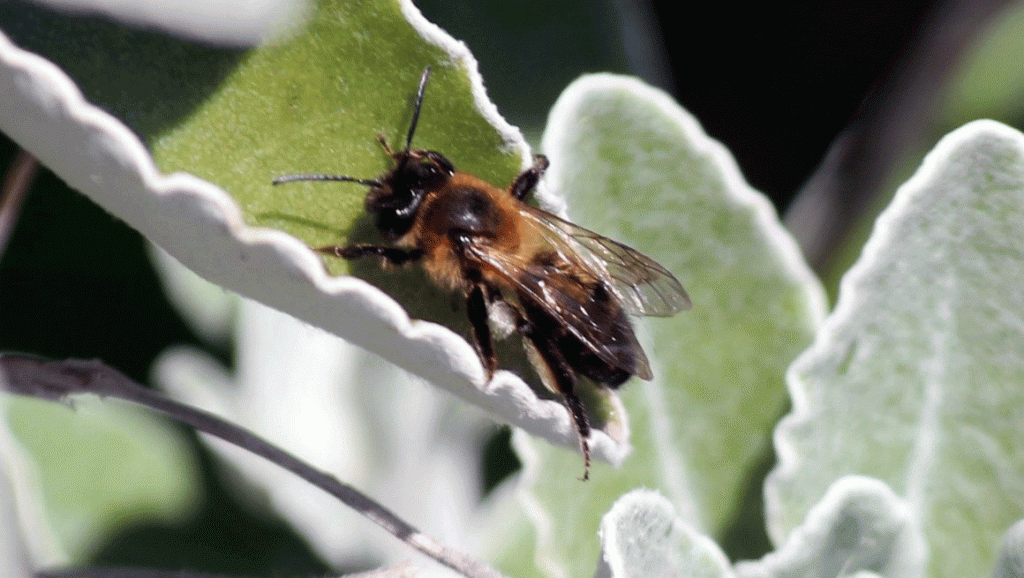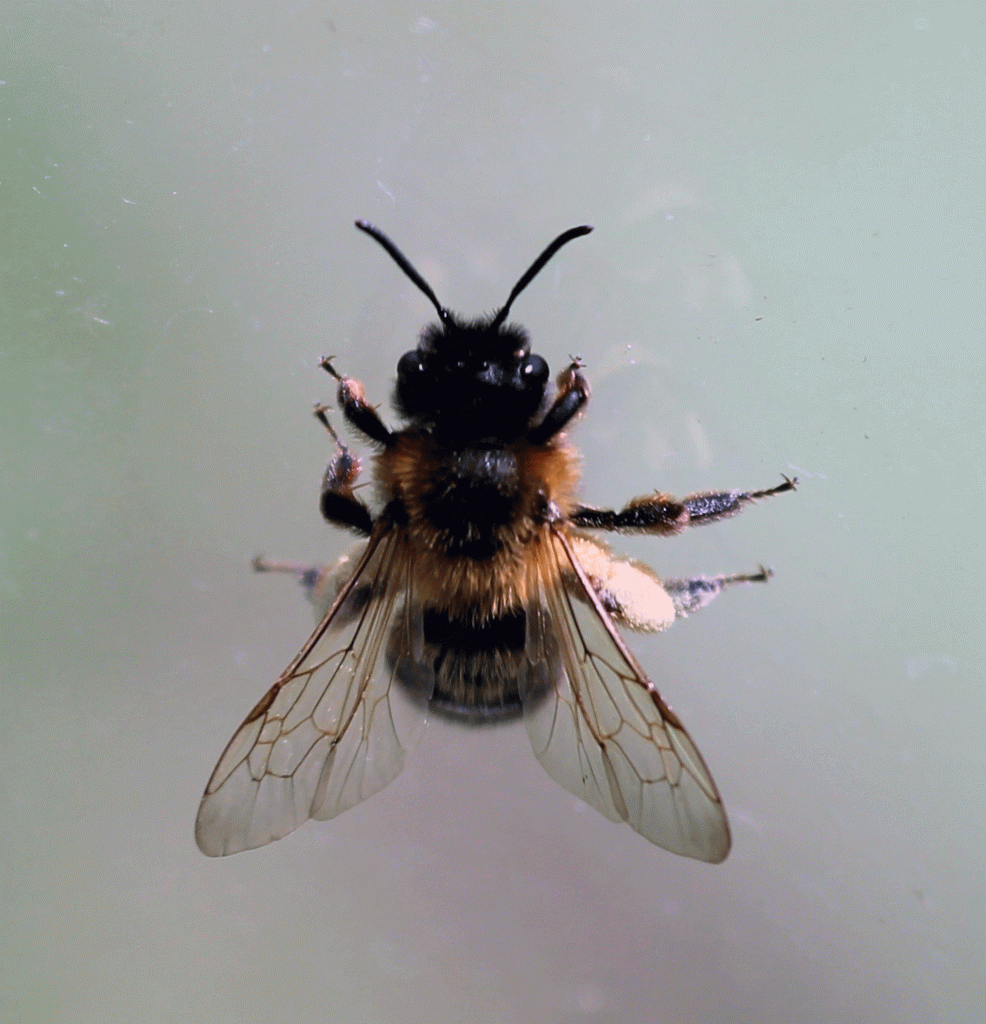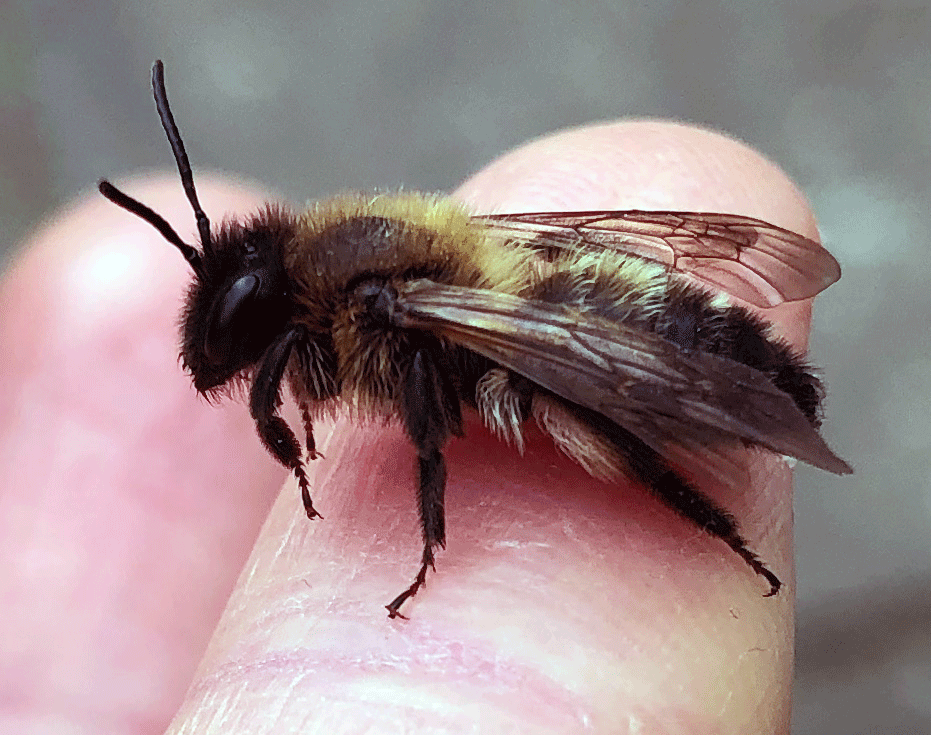By Gavin Ramsay and Justine Swinney

In early Spring, we often receive enquiries about potential sightings of native Scottish honey bees. In most cases, these are in fact chocolate mining bees, Andrena scotica, which are dark, similar in size to honey bees and resemble them closely. Here are some tips for differentiating between the two. (Sadly, gathering chocolate is not one of the distinguishing characteristics!).
There are over 60 Andrena species in the UK. They are solitary bees, which live in all sorts of habitats. Andrena scotica seems to be quite happy to live alongside humans and they are typically seen going into holes in the ground or low down in walls with crumbly mortar and cavities. Honey bees are very reluctant to nest at this height and normally make nests in substantial cavities at height. Chocolate Mining Bees may be seen in relatively large numbers, which may seem surprising for a solitary bee, but they nest in aggregations, often sharing single entrances and making their own small chambers off the main tunnel.

They appear in mid-April and are mostly gone by late May. In that time, they mate, clear and provision their nests with pollen and lay eggs for the next generation. At any time and particularly later on during this period they may explore inside buildings.
The key features that discriminate Andrena scotica from the native Scottish honey bee are:
- A larger, darker head
- Antennae that tend to curve rather than being kinked
- Eyes without hairs
- Pollen collecting structures on the hind legs, composed of hairs rather than corbiculae (the flat segment of honey bees)
- This distinction is common to all Andrena species, but the crucial feature of Andrena scotica is that some of these hairs are white
- They nest low down in burrows
Although female Andrena mining bees do have a sting, they are not aggressive and their stings are weak, so people in their vicinity are not at risk. Their season is relatively short and we always recommend that you try to enjoy their presence and wait a few weeks for the adults to complete their life cycle.

